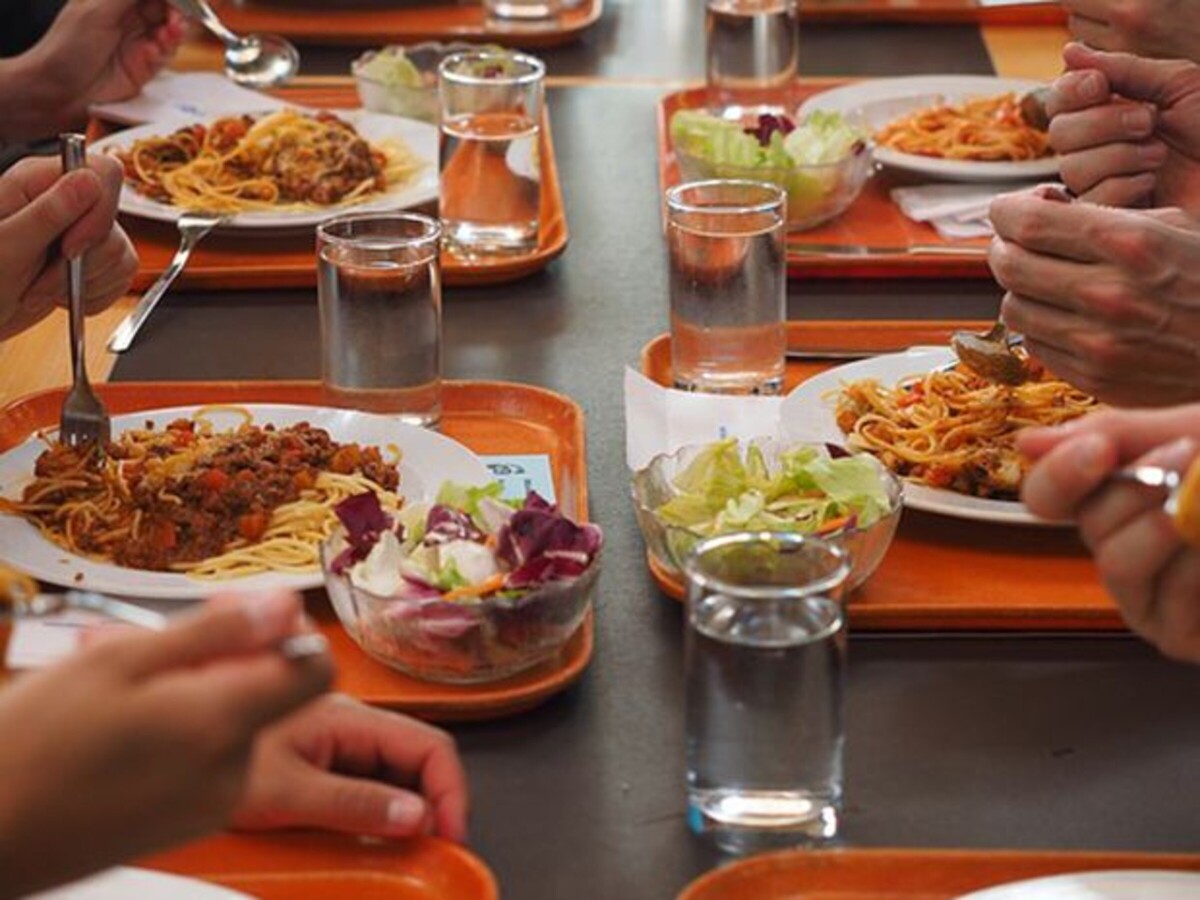Image

WHAT’S COOKING WITH BCPS FOOD AND NUTRITION SERVICES
By TEAM BCPS
Last week, BCPS joined with other school systems, in celebrating National School Lunch Week. The BCPS blog checked in with Jaime Hetzler, director of the Office of Food and Nutrition Services, for an update on breakfast and lunch meal service in schools.

“The quality of the food we serve is key to supporting a positive learning environment,” says Hetzler. “The total number of meals we serve has increased 33 percent since 2012.”
“The quality of the food we serve is key to supporting a positive learning environment.” - Jaime Hetzler, director, Food and Nutrition Services
“Since March 2020, we have been serving meals to all families, free of charge, thanks to federal ‘waivers’ that were in place across the nation due to the COVID-19 pandemic,” explains Hetzler. “Starting this school year, we are resuming ‘normal’ services, and meals are no longer free of charge to everyone. However, BCPS has been able to increase its participation in programs to serve more students with free meals and has taken several steps to improve food quality and reduce waste.”
.png?auto=webp)
The number of schools participating in the Community Eligibility Provision increased from four schools to 87 schools. All students in these qualifying schools (located in communities with high rates of poverty) receive free breakfast and lunch meals, and the families of these students do not apply for free and reduced-price meals.
The Fresh Fruit and Vegetable Program, which Hetzler calls her “absolute favorite,” has been expanded from 12 schools last school year to 27 this school year. According to Hetzler, the program is designed to “establish better eating habits at a young age” and “students are very excited to be a part of it.”
Through the program, each month, students in their classrooms are introduced to a fruit or vegetable they might not know. Teachers share information and flyers about the fruit or vegetable, and students can see it whole and taste samples.
The Maryland Meals for Achievement initiative also has grown in BCPS from 90 schools in 2021-2022 to 109 schools in 2022-2023. This initiative uses state funding to allow participating schools to serve free breakfast to all students.
.jpg?auto=webp)
.png?auto=webp)
.jpeg?auto=webp)
.jpeg?auto=webp)
All food that BCPS serves is vetted by a dietician and must meet strict United States Department of Agriculture menu guidelines: containing less than 10 percent saturated fat, less than 1,360 mg of sodium per day, and containing zero trans-fat.
According to Hetzler, BCPS Food and Nutrition Services is continually seeking to improve food quality and removing items that don’t meet standards. For example, since last school year, the office has swapped a number of high-sugar and less nutritious breakfast items – such as doughnuts, cereal bars, chocolate muffins, and iced cinnamon rolls – with healthier choices – including whole grain waffles, lemon bread, fresh fruit, yogurt, pancake-wrapped sausages, and hard-boiled eggs.
“With the support of grants,” Hetzler adds, “we are increasing the oven capacity in elementary schools. When we have the capacity to produce more food onsite, our ability to control the quality of the food is greatly improved and, as a result, we feed more students.” Recently, BCPS received a $26,413 donation from Giant Food’s Nourishing Our Youth food initiative that will be used to purchase more ovens.
Starting this year, all schools now offer a selection of at least three fresh fruits and three fresh vegetables, every day. “By offering a wider selection,” Hetzler says, “we expect that students will be more likely to find something that they enjoy and will choose to make healthy choices. We also began, last week, offering ‘bento boxes’ with a fresh assortment of proteins, fruits, and vegetables, that the students are sure to love. There also are eight new salads on rotation as well as new sandwich options.”
Starting this year, all schools now offer a selection of at least three fresh fruits and three fresh vegetables, every day.
During the September 27 Board of Education meeting, immediately following a presentation about school meals, Superintendent Dr. Darryl L. Williams commended the work of Food and Nutrition Services staff as well as cafeteria workers in schools. He noted that during his frequent visits to schools, he often eats in the cafeteria with students and that he often witnesses cafeteria staff reminding students to pick up the fruits and vegetables they like and often hears students praising new options such as banana bread, lemon bread, and hummus.
.png?auto=webp)
.jpg?auto=webp)
.jpg?auto=webp)
.jpg?auto=webp)
.jpg?auto=webp)
Hetzler notes that one benefit of providing more options to students is that they will consume what they select.
“After a successful year-long pilot program,” Hetzler continues, “we have launched our new Food Waste Program to address food waste in our schools. We are dedicated to saving our landfills while making a positive impact to the budget as well!”
The program was piloted at Dundalk Elementary, Eastern Technical High, Kenwood High, and Padonia International Elementary, schools that had already begun working with the Sustainability Office on reducing waste and beginning to compost. Signage and other communications and staff training were refined at these schools. For example, one key message was that students who don’t want milk don’t need to take it. Many students reported that the message that they had to take milk was ingrained in them in elementary school, and so, as a result, they would often take milk and immediately throw it away.
Now that the Food Waste Program is systemwide, the goal for the first year is to save at least 25 tons of milk and 18 tons of fruit cups from the landfill.
Now that the Food Waste Program is systemwide, the goal for the first year is to save at least 25 tons of milk and 18 tons of fruit cups from the landfill.
.png?auto=webp)
Hetzler concluded with the message that improving meals in BCPS is an ongoing process, and that students and families are encouraged to share feedback with cafeteria staff or teachers. The Office of Food and Nutrition Services also periodically has students taste-test potential new menu items.
© 2022 Team BCPS